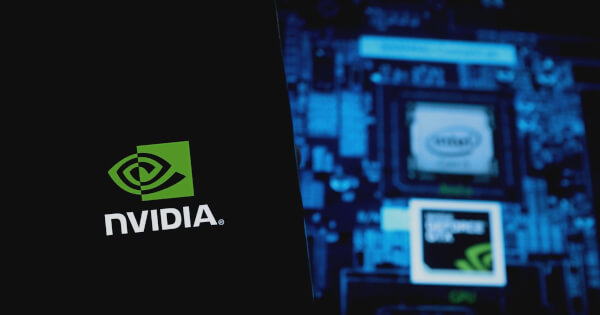Luisa Crawford
Feb 20, 2025 22:42
NVIDIA BioNeMo introduces Evo 2, a revolutionary AI model for biomolecular sciences, offering insights into DNA, RNA, and proteins across diverse species.
NVIDIA BioNeMo has launched Evo 2, a cutting-edge biomolecular AI model, which marks a significant advancement in the field of genomic data analysis. According to NVIDIA, this model is the largest publicly available AI tool for genomic research, developed in collaboration with the Arc Institute and Stanford University on the NVIDIA DGX Cloud platform.
Revolutionizing Genomic Research
Evo 2 is trained on an extensive dataset comprising nearly 9 trillion nucleotides, the fundamental components of DNA and RNA. This model is poised to transform biomolecular research applications, enabling the prediction of protein structures and functions from genetic sequences, discovering new molecules for healthcare, and assessing the impact of gene mutations on their functions.
Patrick Hsu, cofounder of Arc Institute and an assistant professor at the University of California, Berkeley, emphasized the model’s potential, stating, “Evo 2 represents a major milestone for generative genomics.” He further noted the model’s capacity to advance solutions in healthcare and environmental science.
Enhanced Access and Capabilities
Available globally on the NVIDIA BioNeMo platform, Evo 2 can be utilized as an NVIDIA NIM microservice, facilitating secure and efficient AI deployment. Researchers can fine-tune the model using proprietary datasets, leveraging the open-source NVIDIA BioNeMo Framework, which offers accelerated computing tools for biomolecular studies.
Brian Hie, assistant professor at Stanford University, highlighted the model’s impact on biological design, describing it as a tool that makes the design of complex biological systems more accessible and efficient.
Applications in Diverse Scientific Fields
Evo 2’s capabilities extend across various scientific domains, including healthcare, agricultural biotechnology, and materials science. Trained on a diverse range of species, the model can process genetic sequences up to 1 million tokens in length, offering insights into the connections between genetic code and cellular functions.
In healthcare, Evo 2 aids in identifying gene variants linked to diseases and designing targeted molecular treatments. For instance, in studies involving the BRCA1 gene associated with breast cancer, the model demonstrated a 90% accuracy rate in predicting the effects of previously unknown mutations.
Agriculturally, Evo 2 can address global food challenges by providing insights into plant biology, aiding in the development of climate-resilient and nutrient-rich crops. Additionally, it holds potential in designing biofuels and engineering proteins for industrial applications.
Dave Burke, Arc’s chief technology officer, likened the deployment of Evo 2 to launching a powerful new telescope, opening vast possibilities for scientific discovery.
Image source: Shutterstock
Credit: Source link





















 Bitcoin
Bitcoin  Ethereum
Ethereum  XRP
XRP  Tether
Tether  Solana
Solana  USDC
USDC  Dogecoin
Dogecoin  Cardano
Cardano  Lido Staked Ether
Lido Staked Ether  TRON
TRON  Wrapped Bitcoin
Wrapped Bitcoin  Chainlink
Chainlink  Wrapped stETH
Wrapped stETH  Sui
Sui  Avalanche
Avalanche  Stellar
Stellar  Litecoin
Litecoin  LEO Token
LEO Token  Shiba Inu
Shiba Inu  Toncoin
Toncoin  Hedera
Hedera  USDS
USDS  Hyperliquid
Hyperliquid  Polkadot
Polkadot  WETH
WETH  MANTRA
MANTRA  Bitcoin Cash
Bitcoin Cash  Ethena USDe
Ethena USDe  Bitget Token
Bitget Token  Wrapped eETH
Wrapped eETH  Uniswap
Uniswap  Monero
Monero  WhiteBIT Coin
WhiteBIT Coin  NEAR Protocol
NEAR Protocol  Pepe
Pepe  Bittensor
Bittensor  Aave
Aave  Ondo
Ondo  Aptos
Aptos  Dai
Dai  Internet Computer
Internet Computer  Official Trump
Official Trump  Mantle
Mantle  Ethereum Classic
Ethereum Classic  Tokenize Xchange
Tokenize Xchange  OKB
OKB  Gate
Gate  sUSDS
sUSDS  Sonic (prev. FTM)
Sonic (prev. FTM) 
